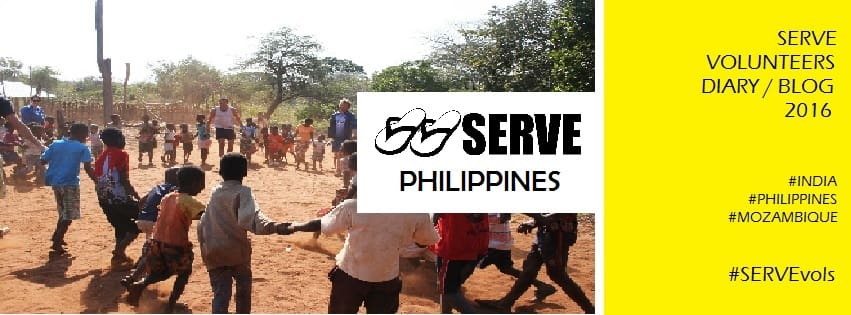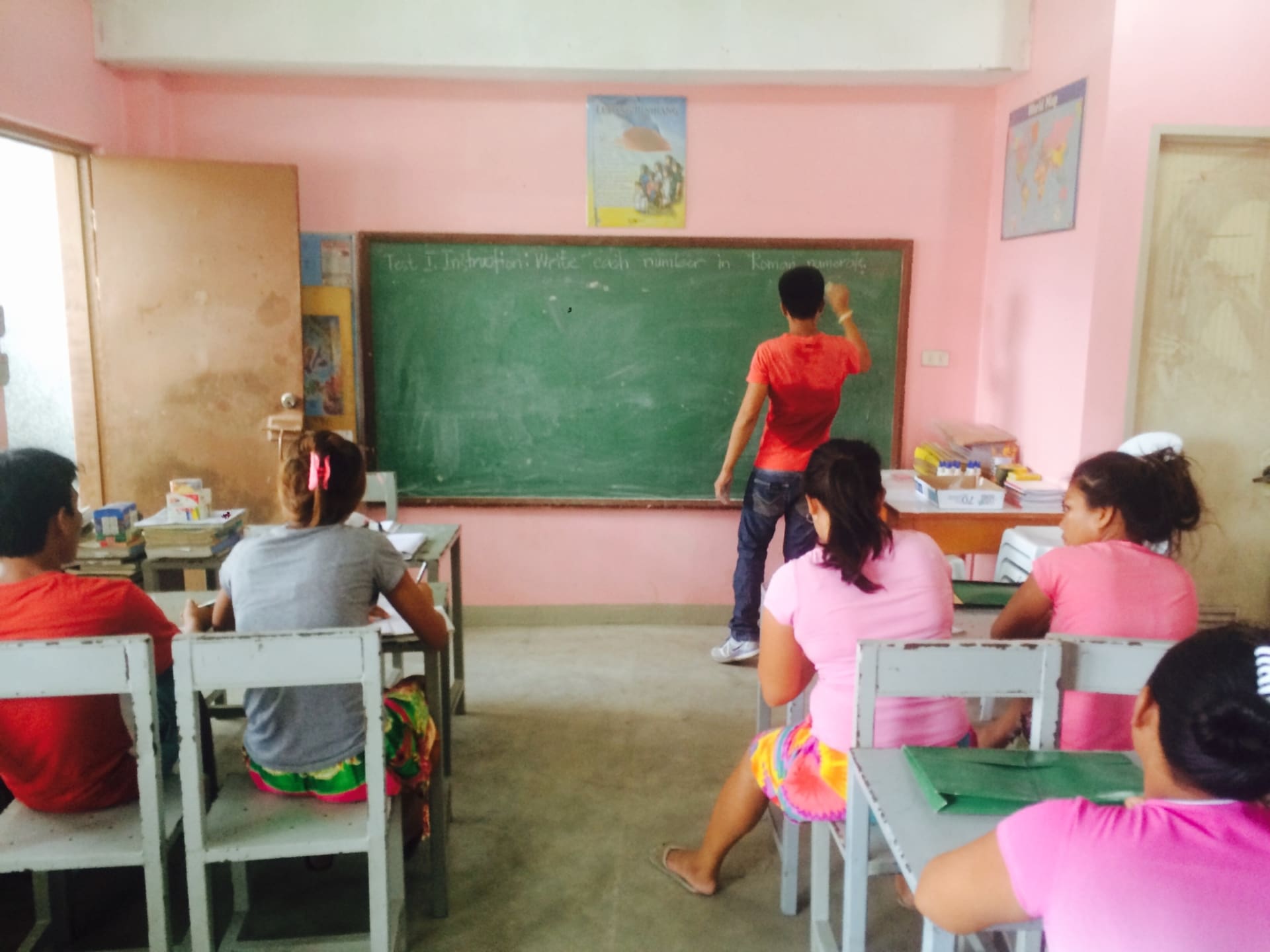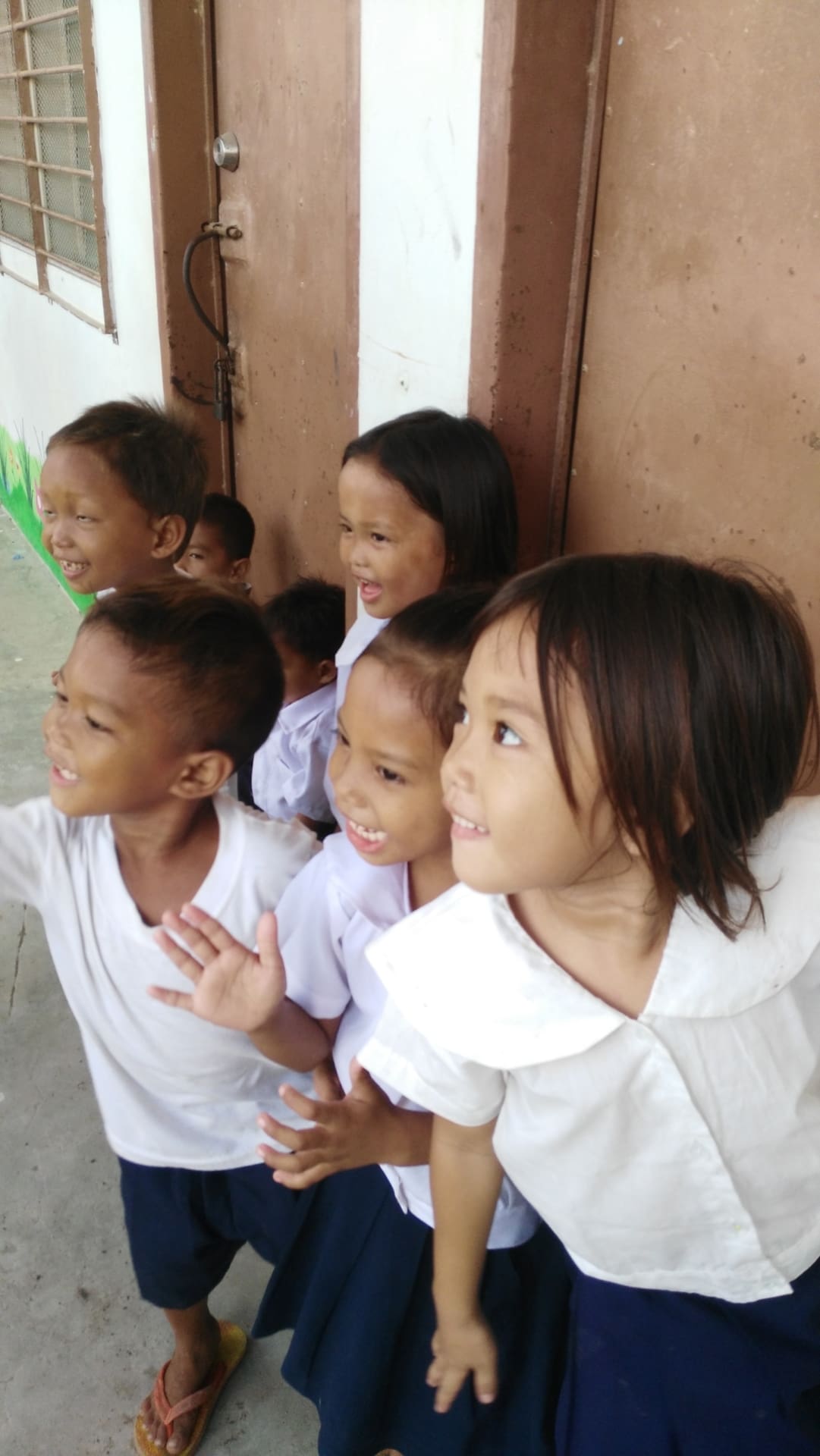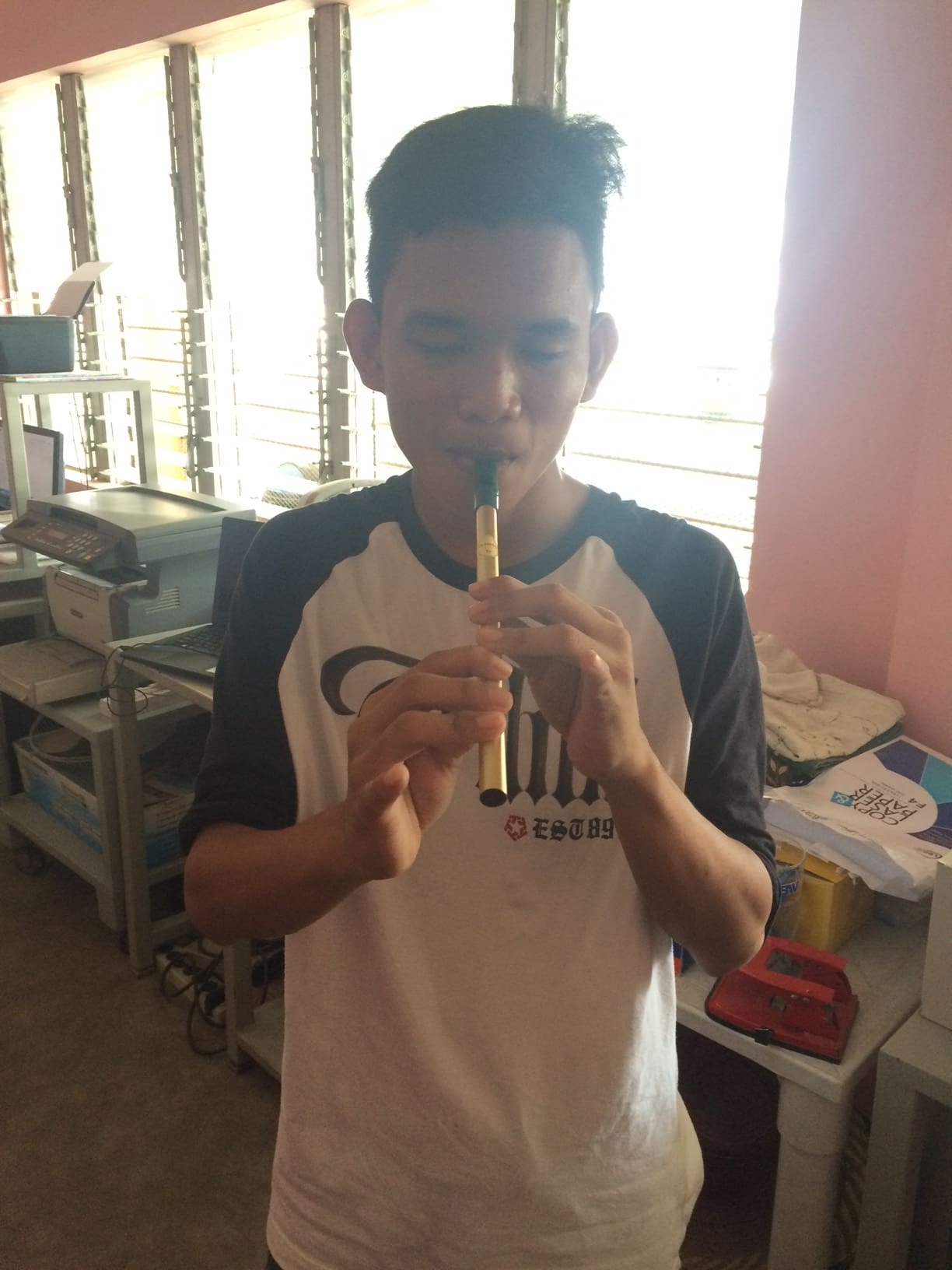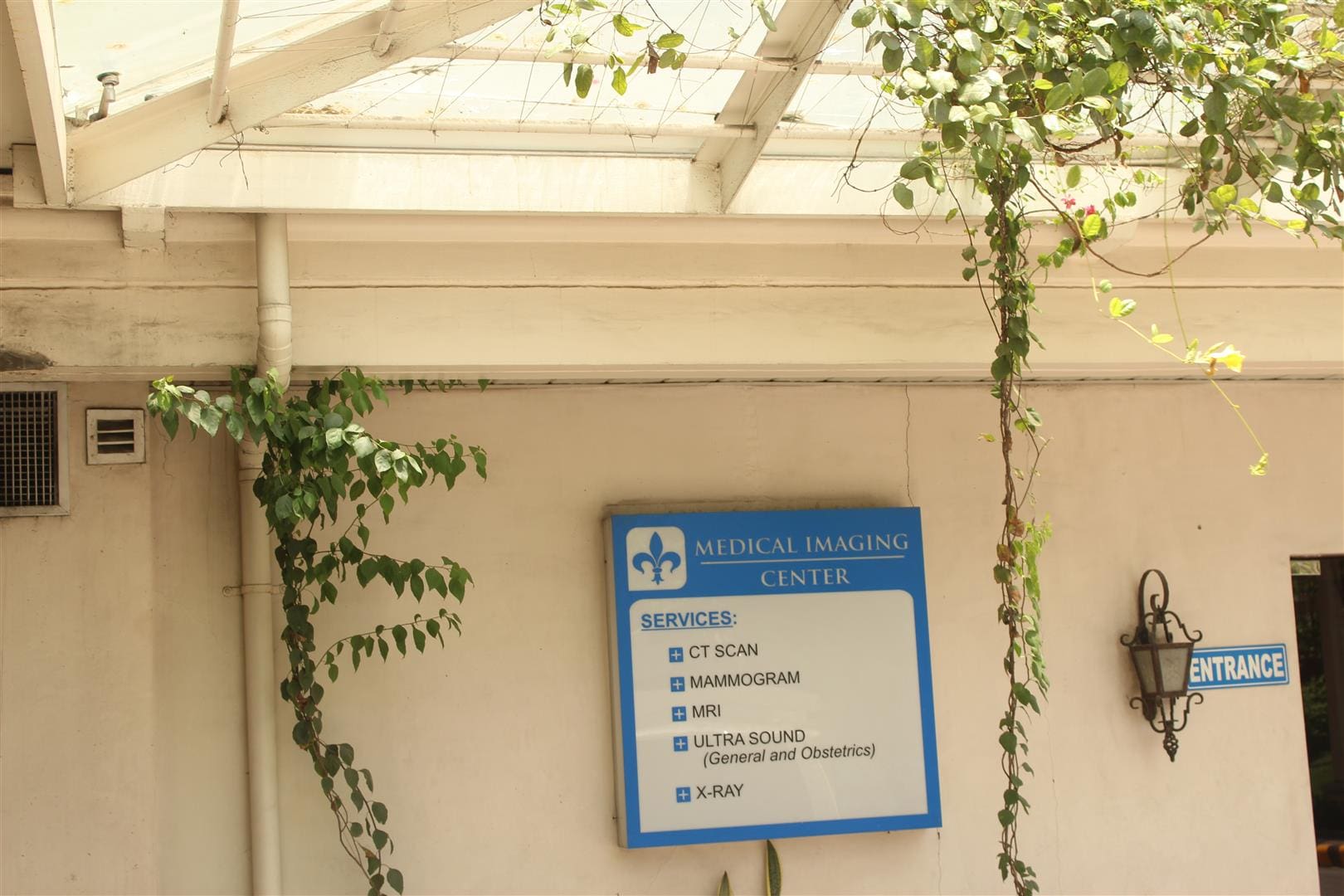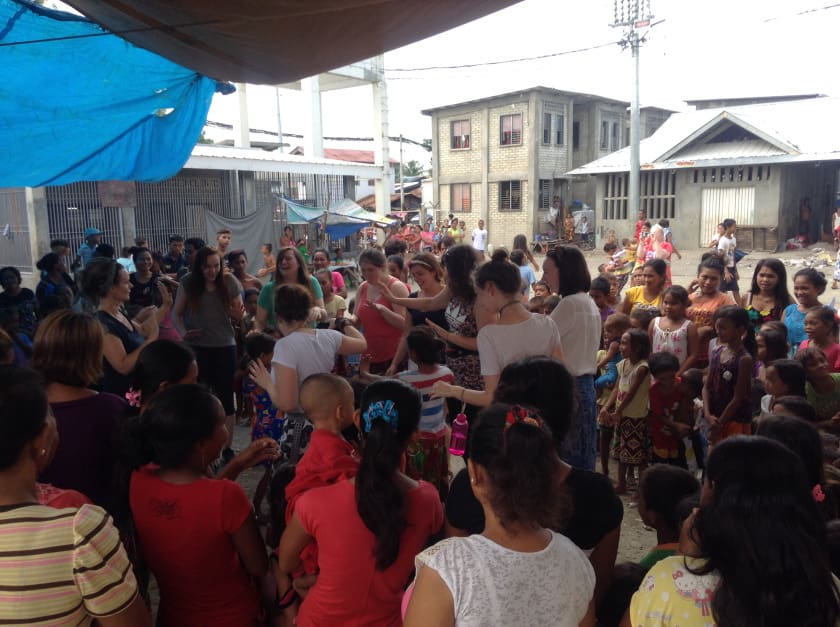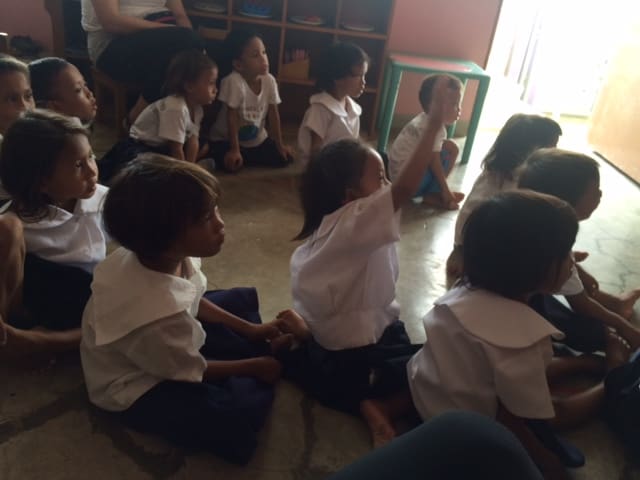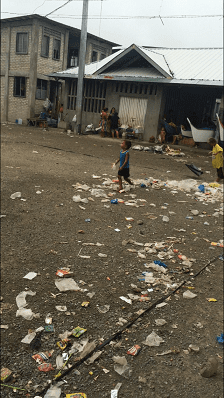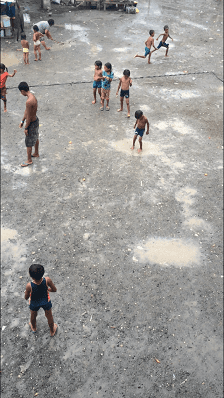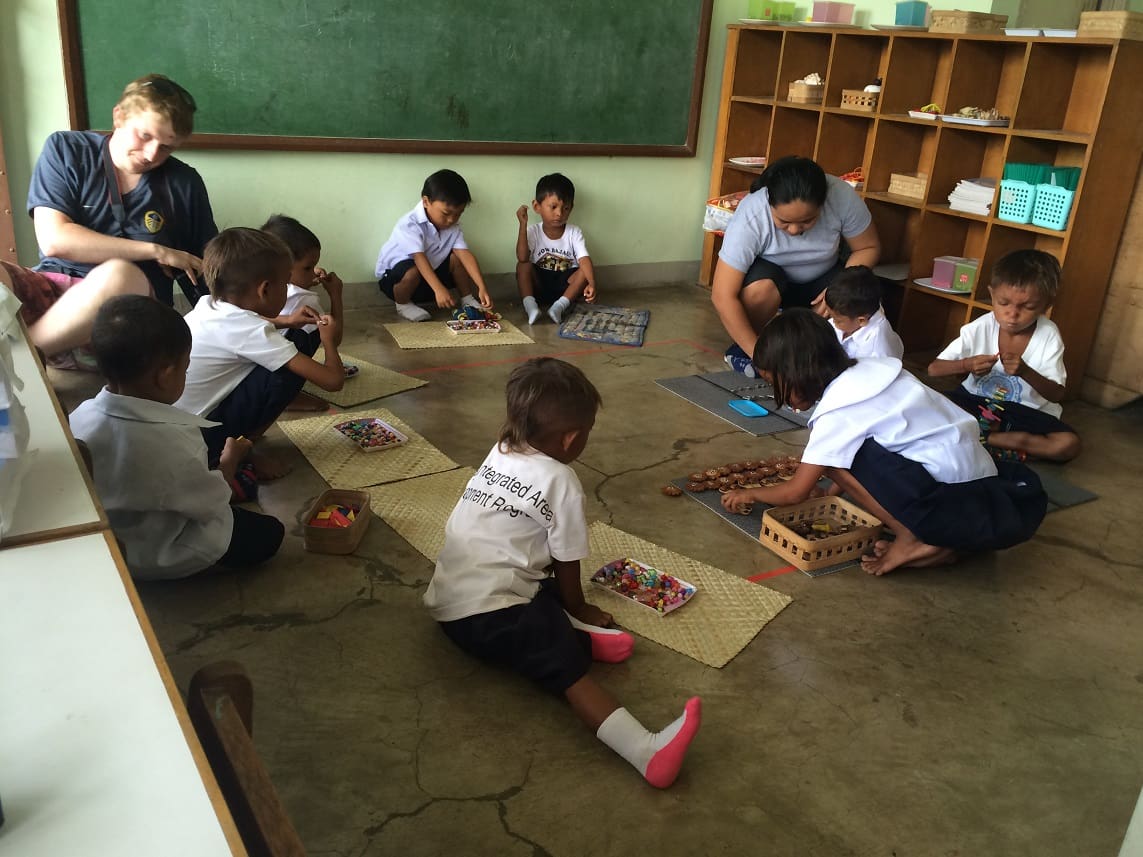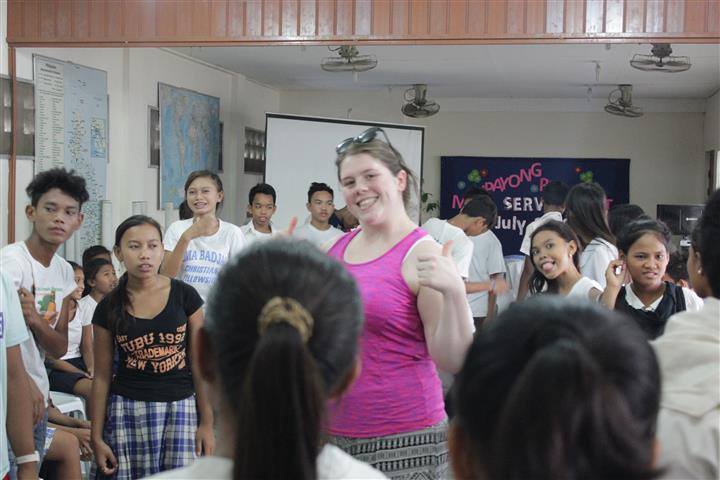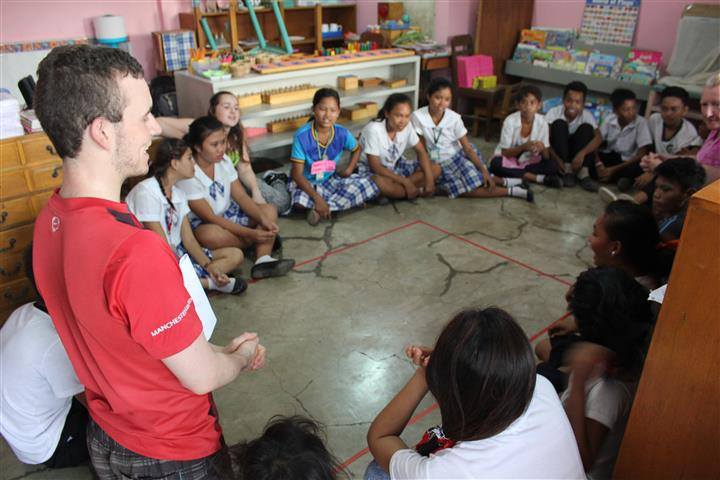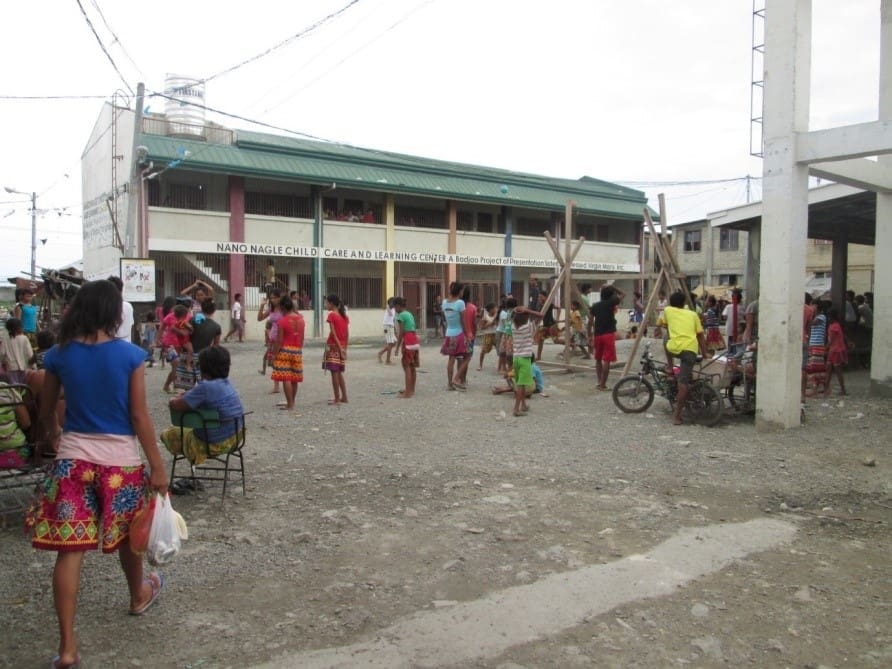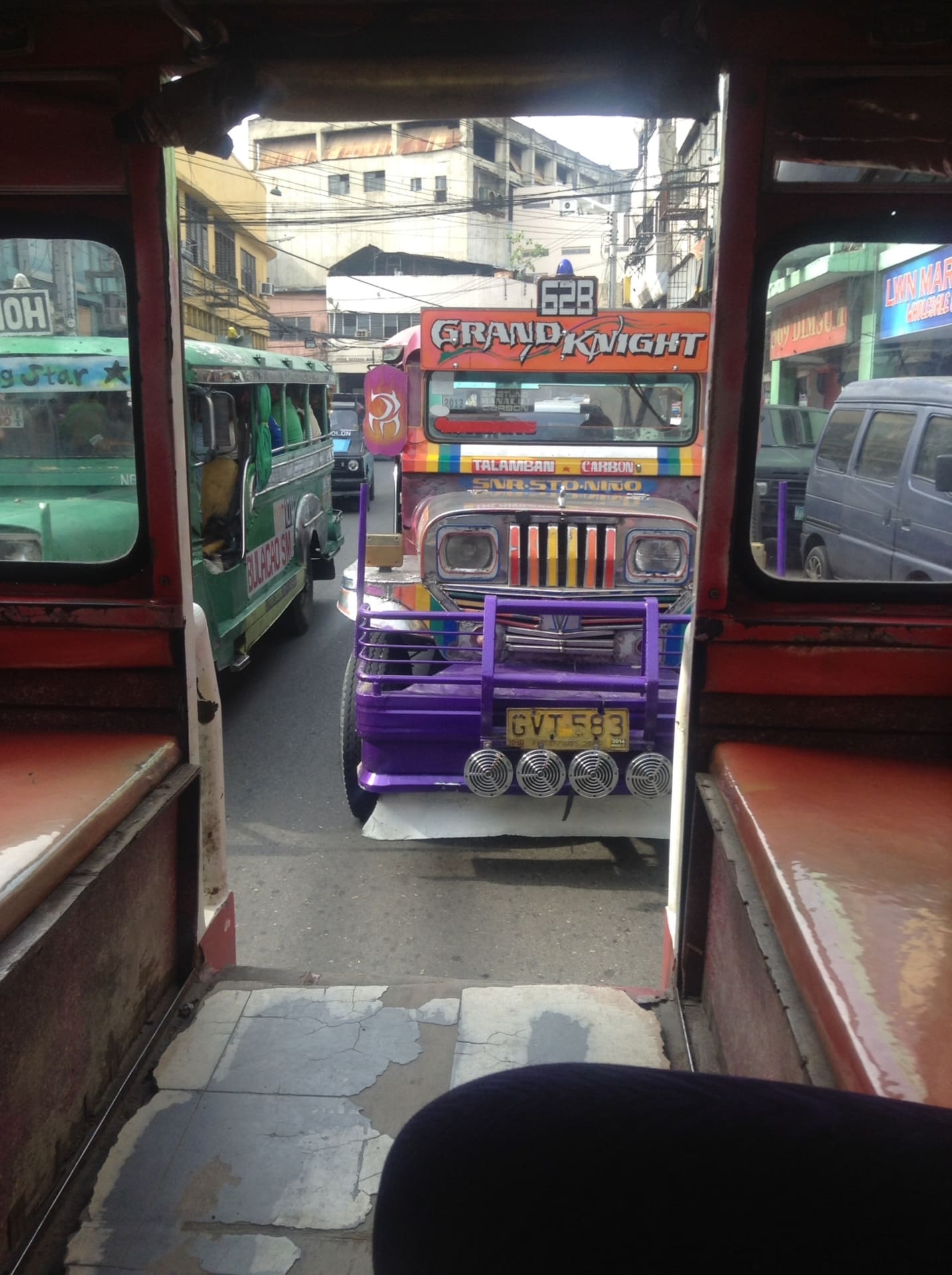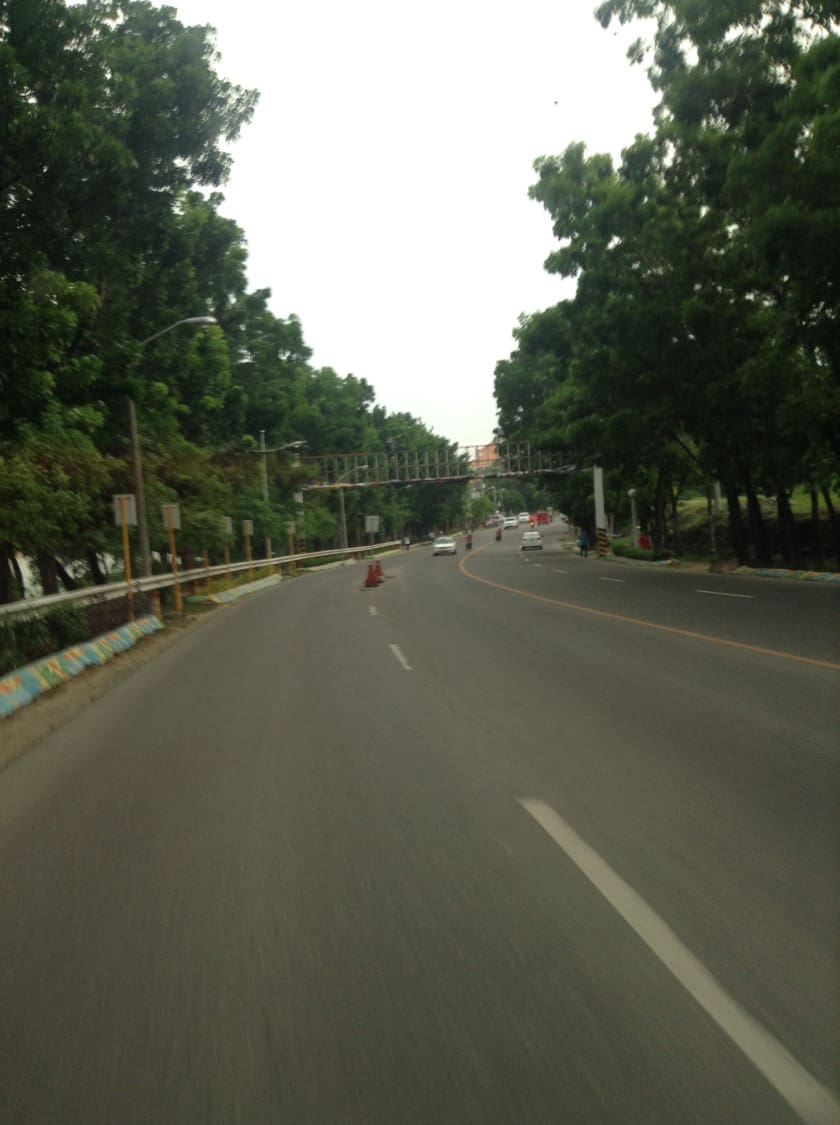Education in the Badjao Tribe
By Mary-Kate Ryan
At home in Ireland we very much take our education for granted. When I was younger I naturally expected to progress from primary to secondary school and then to third level. This is considered ‘the norm’ for most young people growing up in 21st century Irish society today. However, seventeen thousand miles away for the Badjao tribe living on the outskirts of Cebu their educational journey isn’t as simple, as they face many roadblocks and stumbles along the way.
Embedded in the culture of the Badjao tribe is arranged marriages. Some of these marriages take place at the tender age of thirteen or fourteen. In fact, if you are twenty and unmarried with no children, you are said to be ‘an old woman’.
Within the Nano Nagle Badjao School they have a strict policy stating that girls who get married can no longer attend classes within the school. This isn’t to punish their students, but to delay them getting married and encourage them to complete their education, as this provides them with a pivocal stepping stone to securing employment. The teachers within the school are working diligently to educate the tribe about the value of education and informing them that marriage should happen later in their children’s life.
It seems that many parents within the Badjao community really value education. During my short time here I have heard mothers stressing how they want their daughters to complete school. After delving in further I realised that these mother’s beliefs were fuelled from the fact that they were not able to finish their education as they had to get married.
Unfortunately for many in the tribe, it is not as simple as saying ‘I don’t want to get married’. When a Badjao boy wishes to wed a Badjao girl his family give a dowry. But if the girl rejects, her family must pay up an equal sum of money, which many families amongst the Badjao cannot afford. There is also the ‘blanketing’ tradition. This is when a boy informs his parents of his wish to marry a certain girl. The boy’s parents then accompany their son to the girl where he throws a blanket over her back, which indicates that they are now getting married, and the dowry still applies.
The Badjao tribe are dispersed throughout the Filipino islands and many men from different Badjao tribes travel up the coast to the city of Cebu to marry these girls due to their educated status. These men are very wealthy and offer huge dowry’s as they are fishermen, which is extremely attractive to many families as they desperately need money. All of these varying factors impact substantially on the Badjao tribe and portrays why many girls marry at such a young age. Recently, a fifteen year old girl got married. Her mother left school and got married at the age of fourteen, and already at the age of thirty four has seven children. As the tradition continues, her daughter left school last year when the marriage arrangement was made. The teachers within the school tried to stop them but unfortunately were unsuccessful.
I think before travelling to the Philippines I believed money, fundraising and donations were key to help tackle poverty in a given community. Yes, funding is important but it is only one piece to the jigsaw. Many things are needed but I have only now realised the power of education. It provides people with the skills required to flourish both intellectually and holistically. Here at the Nano Nagle Badjao School children from the age of four are educated in their kindergarden class, elementary and high school students attend tutorials to consolidate what they have learnt during the week in public school and adults are provided with a second shot at accessing education during development class. All of the teachers in the school are inspiringly devoted to the Badjao’s education, and are constantly trying to break down the barriers they face in accessing education, like early marriage. I believe that if the tribe receive that continued chance, the opportunity to be intellectually and holistically nourished, which they truly deserve it will provide them with a platform to knock down the impoverished environment which they are living in, and step by step, they will build a brighter, bigger and better future.
Philippines – Challenging Perspectives
To encourage SERVE’s 2016 volunteers to think critically about common perceptions and misconceptions relating to developing countries, they have been given the task of taking photos that we think will challenge the perspectives of people in Ireland. These photos are coming from our volunteers working in the Philippines during July and August 2016.
While so much has changed, developing countries continue to be described through a series of lacks and absences, failings and problems, plagues and catastrophes. The challenge we set our volunteers was to be open to seeing things differently, to fight the stereotypes and exhibit the reality.
The photos featured here aim to challenge perspectives around such things as consumerism, education, wealth and nature, which may not necessarily be the common images we associate with the Philippines.
At all times the volunteers will be keeping in mind the Dochas Code of Conduct on Images and Messages.
Challenging Perspectives – Philippines
By Emma Ryan and Aisling Cronin
Our time in the Badjao is flying by here. We have only now nine days left in Cebu. The last three weeks have made us realise how this country is different in so many ways to Ireland. On the other hand there is little difference in the power of education for the future of many children that have the opportunity to receive it. Luckily the Badjao community have come a long way with the support of SERVE. Mission Cara and The Presentation Sisters. They have given so much time and dedication to this project by hiring enthusiastic and caring teachers. Junri and Venerva are two of the five teachers that are past Nano Nagle Badjao students. From talking to Junri and Venerva we have learned that the have faced many challenges and struggles to get to where they are today in areas of finance and family traditions. Another inspiring and successful story of the power education is Tommy’s who is now studying social work in college. Tommy is a 19 year old former Nano Nagle student who began school when he was 6 years old. To get a further insight into Tommy’s success, Emma and I had the opportunity to speak to Tommy so that he could tell his own story.
Tommy has eight siblings and his parents in his family and he is the 5 th eldest in his family. Tommy is the first child that has gone through education and is now studying in college in a career that he hopes to pursue in the future. Tommy had many struggles that had to overcome to get to where he is today. When he was in first year of high school his mother became ill which he felt effected his attendance in school. He also got bullied in school which he realised at the time was because of this Badjao heritage as he felt that those that bullied believed that he could not take part in education that like his fellow students. Tommy did not let this stop him and ensured that he would follow his dreams and improve his life through the help of education. Tommy believes in the power of education as it has got him to where he is today.
He first learned English at the age of 13 years of age. During his time in high school his timetable was from 7am to 4pm and this fellow Badjao classmates received tutoring from 4pm to 5pm in the Nano Nagle Learning centre in the evening. Tommy choose to so Social work so that he could support his community and help improve their lives. His ambition in life is to finish his last two years in college and work a long side his community. He also hopes to travel with his degree in the future to further his opportunities. He is also the president of the youth council in which he leads hoping that he will inspire others to follow his path in education. Tommy is delighted with the amount of transformation that has occurred in their community since the volunteers began the project in 2003. He acknowledges how they have helped the students in the community in areas of communication and inspiration to continue with their education and hopes for the future. He recognises that they have had more opportunities in finding jobs to support their families.
Stolen Glances / Granted Chances
By Ronan Bennett (taken from https://ronanbennettvolunteer.wordpress.com/)
1/8/16
As our time here in Cebu nears it’s end, an air of apprehension and appreciation is what is dominant in the group. We are dreading returning to normality and leaving all of these wonderful people but simultaneously, we have gained a deep understanding of the Badjao and can appreciate their culture and talents.
It is like how going back to work on a Monday makes you appreciate the time you have off on Sunday; when time is limited, time becomes precious.
This week has been a cluster of smiling moments and as time has moved relentlessly on, the people of the Badjao have offered us more and more insights. Stolen glances have turned to granted chances.
Friday saw us take a sebatical from the usual timetable to visit the local elementary school where 287 Badjao children are now attending class. The school is an oasis of opportunity; one trudges through winding muddy streets amidst rubbish, animals and unidentifiable but positively unsettling smells and ultimately reaches the colourful and vibrant building.
The children were ecstatic. Waving and shouting at us with beaming smiles. The classrooms were bigger than what is average at home but class sizes are almost double Irish sizes. There can be over sixty pupils in one class, with one teacher. The teachers are dedicated and so hardworking. It was yet another welcome to add to our collection, each one as gracious as the last.
Meeting with the school’s principal, she gave us an uplifting snippet of information. In the not so distant past, the Badjao children endured bullying in school, solely because of who they are. The principally informed us that bullying is not a problem for the Badjao children anymore as they have integrated well into the school’s system. Hopefully, this integration will extend into other elements of society as discrimination and abuse still affects the Badjao in daily Cebuano life.
Saturday then saw us become part of the Badjao Youth’s activities and graced us with an insight into their culture and traditions. The day began with dancing out in the middle of the community. Everybody was taking part with many members of the community onlooking with happiness. Every day is a celebration.
A series of dramatic portrayals then showed us some of the Badjao’s customs and traditions. Two such traditions were a Badjao funeral and a thanksgiving ceremony. Both of these traditions involved a large congregation of community and also an air of solemness. These practices are serious and must be taken as such. The fact that these ancient rituals have been preserved to modern times is astounding and that they are still practiced and revered is even more amazing.
Thanksgiving involved the binding of two families together in a pact which was overseen by a type of priest. The two families drank water and were anointed by incense in an effort to ensure peaceful relations throughout the year and to show thanks for a year of peace just gone.
The funeral was strikingly similar to an Irish funeral. The body is wrapped and preserved and mourned for 3 days and 2 nights. The only difference is that the prayer service happens after the burial instead of before. Like the Irish, the Badjao keep their dead very close to their hearts.
Learning about these rituals is a privilege and being allowed to partake in the portrayals of them is just a sign of how close we have become to the Badjao over the past 4 weeks. They told us at the very beginning that we are part of their family and it truly feels that way. The love and generosity shown to us can only be equated by the love we have for them. It is impossible not to want to stay forever.
——–
Follow Ronan’s previous blog posts relating to his SERVE volunteer experience in the Philippines (https://ronanbennettvolunteer.wordpress.com/)
Building Bridges, Building Relationships
By Fiachra Brennan (taken from https://medium.com/@FiAcHrAbReNnAn)
1/8/16
Three weeks volunteering in Cebu City, working in a foreign environment completely different to any prior life experience, my mental and physical endurance is being severely tested. We set out from Dublin to work in solidarity and partnership with the Badjao, to gain a greater cultural appreciation and to make a positive contribution as global citizens.
Hammered by increasing exhaustion, sweltering heat and challenging dietary options it is easy to lose sight of our objectives.
Volunteering is often derided by detractors as an altruistic holiday; hold a couple of kids, lay a few bricks and enhance ones Instagram catalogue, whilst also seizing the opportunity to see a far-flung part of the world, often at another’s expense. Sometimes it happens; volunteers are driven to their air-conditioned hotel, eat familiar Western food and are transported in comfort to their volunteering project. The experience comes to an end and the volunteer moves on, another box ticked.
SERVE do not adhere to this farcical interpretation of ‘volunteering’, instead emphasising the importance of solidarity and cultural immersion. We eat local food, often prepared by ourselves. We travel in Jeepneys and Tricey-cads, the transport of the poor. We walk in flip-flops, the footwear of the most impoverished people on earth. We receive development education, our experience not empty and hollow but driven by lively debate and extremely valuable training. Time and again the importance of continuity is emphasised, the volunteering experience only an introduction to our lives as engaged global citizens.
SERVE’s volunteer program is immensely important to the Badjao and the Nano Nagle Education Centre, for reasons we often fail to appreciate. Volunteers bring with them a plethora of skills, knowledge and expertise. Furthermore their fundraising and experiences with the organisation enhance SERVE’s profile and reputation, maximising support from large institutional funders, namely Misean Cara. And perhaps most pivotally volunteering in solidarity fosters mutual respect, cross cultural understanding and tolerance. Returning volunteers are given a perspective on society that challenges many of their preconceived ideas and assumptions.
It is for these above reasons it is so pivotal we remain true to our objectives — solidarity and partnership, cultural immersion and making a positive contribution as a global citizen.
Solidarity is a challenging ideal to adhere to; we are only with the Badjao for 4 weeks and there is so much we want to achieve. Obstacles impede our progress; visits are repeatedly delayed, projects scrapped, workmen operating at a seemingly leisurely pace. These are not criticisms, I fully appreciate that we are volunteers, working with the Badjao for a month, whilst others are with them all year around. We are only a small part of a larger, continuously evolving project. We are here to make a significant contribution, not to dictate proceedings for our own satisfaction. In a week we leave and return to Ireland, the Badjao and the teachers in Nano Nagle Education Centre remain, always working towards their larger goals of education and community development
I am frustrated at times, infuriated, saddened that my impact cannot be greater. Sometimes I want to scream ‘I am leaving in a week. We must do more’, but I do not. I go for a walk, I listen to some music, relax for a moment and remember why we travelled to the Philippines — To support our hosts in whatever capacity they require and certainly not to implement a strategy that might be at odds with the needs of the community.
Cultural Immersion is a massively important aspect of SERVE’s volunteering program, helping to build bridges between very diverse communities. We spend two weeks living with Filipino host families, an experience kindly facilitated by the Redemptorist parish of Cebu. It has been far more difficult than I ever could have imagined. We return to our hosts after a long day with the Badjao, our bodies pleading for sleep. Instead we must summon whatever strength remains and interact with the community, navigating a language barrier and the ever prevalent tiredness. It is challenging, it is exhausting and yet it is an experience I am beyond grateful for. We were invited into the incredible community of Waramda, treated upon arrival as a member of the family, akin to three prodigal sons returning. We were given an introduction to authentic Cebuano cuisine — a mix of the staple rice, grilled chicken and wholesome soup. On our last night I had the opportunity to sample chicken intestine and chicken blood, cooked on a skewer.
There are aspects on the host community experience I would change, and those changes would be in the direction of greater cultural immersion. We were housed in a new apartment building, our accommodation kindly donated by the owner of the complex. It granted us more individuality than some of the other volunteers but also deprived us of the chance to experience authentic Filipino living. The opportunity to live in solidarity with a Cebuano family is one I would seize with no trepidation whatsoever.
There are a great many expectations thrust upon volunteers — by friends and family, by donors and by the volunteer themselves. I travelled to the Philippines hoping to make a positive contribution as Global Citizen and I have.
Volunteering is often assessed in terms of quantifiable results — the construction of a school, the painting of a toilet block and so on. Due to the nature of the Badjao project progress is not immediately visible, often leaving me frustrated. The Philippines development program is transitioning. Over a decade was spent working to secure an education centre and suitable accommodation from Badjao families. It has now entered a more challenging stage where the focus is on community development schemes such as the creation of a community garden, the introduction of livelihood programs and launching art, drama and music education.
Our time with the Badjao has helped us appreciate the importance of training and community development work. Through art, drama and music the Badjao youth are given opportunities to express themselves, explore their culture and gain pride in their history, traditions and tribal identity. For decades the Badjao have been treated as second and third class citizens in Filipino society. Discrimination, poverty and government inaction has impeded access to education and helped perpetuate myths about the tribe, typecasting an entire group as uneducated beggars and illiterate fishermen. Promoting community development and pride of identity is a major aid in the battle to dispel myths, stereotypes and ingrained prejudices.
As the teachers at Nano Nagle have told us, our impact upon the Badjao community, the youth in particular, is huge. Through the workshops we have helped the youths grow in confidence, improve their English and experience a sense of acceptance rarely granted to them by other Filipinos. We have contributed a physical representation of Badjao culture, a mural depicting fish in small families, emphasising the importance of family, belonging and identity within the tribe. And we have acted in solidarity, gaining an acute understanding of the major issues facing the Badjao and an appreciation for the strength of character and community that is required to continue the battle for acceptance, education and a decent standard of living.
We are not building houses in Cebu but instead making a more sustainable and extremely valuable contribution — Building Relationships.
——–
Follow Fiachra’s previous blog posts relating to his SERVE volunteer experience in the Philippines: https://medium.com/@FiAcHrAbReNnAn)
Beware of volunteers doing good!
By Katie Fitzpatrick
29/7/16
“An entire industry has sprouted out of voluntourism as it increases in popularity, possibly equal to the increase in global inequality. As the gap between rich and poor widens, so too it seems does the need for those of the global north to assuage the guilt of their privilege (paradoxically, guilt only seems to deepen as many realise the illusory effect of their impact), or to simply look good. The developing world has become a playground for the redemption of privileged souls looking to atone for global injustices by escaping the vacuity of modernity and globalisation” (‘Beware the voluntourists doing good, The Guardian, 2013).
Individual’s reasoning behind volunteering abroad varies. From wishing to widen one’s perspective on the world, to wanting to learn more about a different culture, hoping to share and develop skills, or a genuine desire to help those less fortunate. Each volunteer has a motive for attending that first information session. This may change and develop as the process of volunteering unfolds from that initial step of gathering information, to the final reflections on the experience after arriving back home. It seems that most volunteer’s reasons come from a place of caring and goodwill. Yet there are always going to be some misinformed expectations and beliefs surrounding volunteer programs. In my view, volunteers should not expect a “journey of self-discovery” or spiritual fulfilment, and certainly are not in the position to be some sort of “saviour” come to lead those less fortunate to a higher ground or way of life that we have deemed as appropriate in the minority world. If some sort of enlightenment comes from your experience abroad, it could be an outcome, but never an aim.
In recent times, volunteer programs have been widely criticized and labelled as “voluntourism”. Volunteers have been accused of helping in order to assuage their guilt of privilege. Since I signed up to the SERVE program last December, this argument has always been in the back of my mind, the elephant in the room. I did not broach the subject much with friends who joked that their donation to my fundraising campaign was to pay for my ‘holiday’, nor did I delve into it at training days before departure. I did, however, do some reading online, and a friend introduced me to the satirical Instagram account of “Barbie Saviour” (@barbiesavior”), an account created by two girls who volunteered in East Africa. The girls wanted to use the account to expose volunteers who are “the wildly self-centred person veiled as the self-sacrificing saint”, using their experience for over-sentimentalized photo ops. The bio reads “It’s not about me… but it kind of is”. The side self-indulgent of volunteering. This intrigued me and I worried that I might fall into the same category.
Although I already regarded the work of SERVE in general as well informed and well-intended, I knew this question of “voluntourism” would have to be something that I decided for myself after experiencing some time working on the project and speaking to the people involved. Subsequently, I think I am beginning to establish a clearer view on the volunteer’s role and purpose here.
One of the main criticisms of volunteering abroad addresses the skills of the volunteers. People are often sent abroad without any information about the culture they will be experiencing, or without the appropriate skills to offer the community they will be working with. Orphaned babies are assigned to volunteer mothers with whom they form an attachment, only to have this broken when it’s time for the surrogate mother to return home. Volunteers with no training in education are charged with teaching large classes of kids, often through a different language. Pressure is put on volunteers to build houses in too short a space of time when they are without any skills in construction. It is my understanding that these sort of volunteer programmes can be more damaging than they are helpful. However, when I met the group that would be on the SERVE Philippines programme with at one of three pre-departure training days, I was impressed by the range of skills and professions. Social care workers, primary school teachers, a prison chaplain, drama teachers, music teachers and a visual artist make up most of the Philippines team. In our first two weeks here I have seen these skills put to use, particularly during the evening workshops in drama, music and art for the high school students, and also during teacher training for the five teachers of the Nano Nagle School.
Another common criticism is on the sustainability of the programmes that the volunteers engage with. Sometimes, they can be one-off visits by volunteers who start something that cannot be continued once they return home. The lives of the community welcoming the volunteers are momentarily altered, but no sustainable impact can be made. Volunteers have been coming to the Badjao community in Cebu since 2003. A steady progression and expansion of the volunteering programme can be traced alongside the development of the school and the Badjao community as a whole. With assistance from other organisations such as RAFI and Misean Cara, along with the work of the Presentation Sisters, a school building and new housing was built. The children have progressed through their education from Montessori to college. Since last year, music, drama and art programmes have been developed along with teacher training so this can continue after the volunteers have departed. Although, some of the projects have taken longer than expected, and some are still in the works, sustainable development is ongoing in the community, with a focus on education and continuous support from volunteers. Last week, the school even had a visit from a past volunteer who brought his wife to the community while on their honeymoon.
Over lunch, I had the opportunity to speak to one of the teachers about how she views the involvement of the volunteers in the Nano Nagle school. She had mentioned previously that the community look forward to the arrival of the volunteers and had three main points about the benefit of having visitors to the school each year. In her view, the most direct impact can be seen in the young people of the Badjao tribe. The high school students engage with the volunteers through an after school programme, which this year consists of music, art and drama. She has witnessed the teenagers build confidence, practice their English, feel inspired by volunteers who have progressed to third level education, and feel love and support from a group outside of the tribe. In Philippine society, the Badjao are often marginalised and stereotyped as beggars. To have a people travel so far to support the community here in Cebu, sends a message that they are not exiled, but rather embraced as an interesting and important people at a global level. On the other hand, the volunteers are introduced to the fascinating culture and traditions as they work in solidarity with the Badjao. When the SERVE volunteers travel, it is only the beginning of the school year. School commences in June at the start of the rainy season and runs until April. The teacher I spoke to mentioned how helpful it can be to have assistance at the beginning of the school year. Each of the Montessori classes have a couple of volunteers to assist with classroom activities.
Although no volunteer program can be without its faults, the program with the Nano Nagle Care and Education centre continues to develop and evolve in very positive ways through engaging with volunteers for a month each year. On the value of volunteering, it is the testimony of the teachers in the school, along with the consensus of the community that matters most. How can the volunteers possible evaluate the impact they might have on a community when their experience of the community is only over four weeks? We can only trust feedback and dialogue with the Badjao community, who in this case, give worth to the project as volunteers engage with through solidarity built on mutual respect.
Contrasting worlds in the same city
By Sinéad McNeela
29/7/16
As we have reached our third week here in Cebu city, it is safe to say we are all settling into the Filipino way fairly well. It is my second week living with my host family and it is definitely an experience I will remember forever. I am surrounded by alternate extremes. The city is filled with extravagant churches, shopping centres and car sales depots but this extravagance is surrounded by run down homes, mass pollution, homeless children and people living in some of the poorest conditions I have ever seen. The extreme level of wealth standing side by side with the vast amount of poverty is difficult to understand. How can two contrasting worlds be in the exact same place?
On a more positive note, our work with the Badjao community is where my experience here in Cebu is thoroughly uplifted.
The Badjao are a marginalised community in the midst of this commercial city. They speak their own language and are often frowned upon by the local Cebu citizens. I witnessed one taxi driver describing the Badjao as ‘dirty’ and ‘unclean.’ It goes without saying, from my experience of working with this tribe – the taxi-man’s statement couldn’t be further from the truth. Although the area itself appears somewhat murky and polluted, this is not a true representative of those who live in the community. The Badjao are kind hearted, sincere, and the most welcoming people I have ever met.
One of the main things that has struck me from working in the school is the concept of education. It is only in recent years the Badjao children have started to receive an education. Many of them marry young so are forced to leave the education system. The teachers who work here are admirable – they dedicate so much time to the children, preparing them for elementary school. Often when the children transition into high school or elementary, they are segregated to their own Badjao class due to the language barrier. The teachers from the Badjao school take the older children for tutorials after school to assist them in their learning and to avoid them falling behind and leaving school.
In the Badjao school there are 4-7 year olds, they learn basic skills (such as washing their hands, putting things away, posture etc) and they also learn English ahead of their transition into elementary school. What is fascinating about these children is their passion for learning. They love to learn and don’t want their class to end.
In the tutorials with the older children, they are literally shouting the answers at the teachers in enthusiasm about what they are learning. This passion and willingness to learn amazes me. We are made to go to school in Ireland, we don’t have a choice, we are handed the privilege of education and we often view it as a chore. We don’t think twice about how privileged we are to receive a primary education, nevermind second or third level qualifications. The children in the Badjao school are so happy to come to school and learn and they attempt to absorb every piece of knowledge thrown at them.
Considering education as now a blessing, there are also other aspects of our everyday life which I have now reconsidered. The simplest of things, such as wind, and rain! The joy that rain brings to these children is so moving. Many of them run home to take their clothes off to come back and run and jump in the mass of puddles. Some of them even sit in the puddle of water to feel the rain pour down on their face.
One day last week, there was very very strong winds. There was dust blowing everywhere and a mass of rubbish floating around in front of my face. Out of the corner of my eye I see Genesis, the happiest little 6 year old I have ever met. He held an empty plastic bag and one by one he tore little strips off it. He then proceeded to throw a little piece one at a time into the air and he ran after it. The wind blew the piece of plastic in every direction and with enthusiasm he ran and ran until he could either catch it or no longer see it. He continued this for a long time, he was so happy. He was surrounded by other children playing but it was as if he was the only one in the yard, in his own little world. Once that plastic bag was done with he found another one. I stood looking at him intrigued. He picked up the bag, put his two hands in each of the handle holes and had the bag on his back. When he ran the bag on his bag would fill with air, every now and again he put his both arms out in front of him and charged, as if he was a superhero. I couldn’t believe the joy that he got from this simple everyday thing, that I wouldn’t even consider to be a ‘toy,’ – but he didn’t need anything else. It made me wonder why we think we need so much to feel fulfilled?! It’s the little things in life!
Seeing, living, learning
By Colleen Bohan
15/7/16
After seven days of being here in the Philippines, interacting with Cebuano and Badjao communities my expectations of what society would be like here has been turned upside-down. I know that I will learn so much from their way of living.
When I had my first encounter with the Badjao tribe I was greeted at the gates of the community by what seemed to be hundreds of children. We were then welcomed by the Nano Nagle school, where they performed a fabulous concert for us. The children had the cleanest clothes, whitest of white, and looked healthy and happy. A lot of these people were better presented than I ever would be in Ireland.
We were then brought on a tour of the Badjao community and it was a huge eye-opening experience. The housing units consist of four quads (a quad is one bare room). There is one family to a quad which can consist of often up to and over 13 people. The quads consist of little to no furniture; all the cooking, laundry and sanitary needs are done outside.
The Badjao tribe has traditionally been a socially outcast and abandoned community by the local and national authorities, and even their own local communities. The services provided to the Badjao community are few and far between and everything that they have, has to be fought for, tooth and nail. Under these circumstances, the pathways between each house and the nearby waterways can become covered in rubbish, sewerage and a smell that is indescribable.
After seven days here, I’ve noticed that Badjao along with other communities here in the Philippines all present themselves pristinely no matter on their living conditions or financial income. People here don’t seem to judge on how big one’s house is or the area they live in and they more worry about how they present themselves.
Another major thing that stands out to me, is the peoples happiness and how welcoming they are. Many have so little yet they are the happiest and closest knit communities that I have ever seen. It’s one of the things that I’ve learned so far that I want to bring with me when I return home. I’ve been thinking I’d never survive in their world, but I’ve now learned they may not survive in mine either, we are completely unfamiliar to each other in some ways, however, we can so much from each other and bring so much joy to each other’s lives.
A truly wonderful welcome
By Rebecca Egan
15/7/16
With just a few days down, no words can ever convey the real feelings and experiences I have had in such a short space of time.
Already this journey is life changing!! After two days travelling to reach the other side of the world, we finally touched down in Cebu City. The spirit in the group was at an all-time high. Arriving in the city alone, was a huge thing to process, along with the serious temperature change and jetlag. The first thing that baffled me in Cebu City was the crazy amount of traffic, which came from all angles. The city in a few words; mayhem, overcrowded, alien, grimy with some very odd lavish randomly placed buildings.
The question that lingered in my head was, who on earth stays in these gigantic hotels? Day two I learned that these sky height buildings, in fact impact the society in awful ways. As many family’s homes have either been demolished or displaced to facilitate space for these unnecessary lavish buildings; hence why the buildings look so out of place. Surrounding every skyscraper building scattered at all angles is overcrowded, falling apart houses. These houses barely even manage to act as a basic shelter due to the harsh conditions of this society. The streets are impaled with layer after layer of rubbish.
The City dynamics serve as a constant reminder that money and power here dominates. Not only does it dominate but it shows just how diverse the society here is. If you are not rich, life here is a struggle. It is truly heart-breaking to see at face value the harsh reality of life here.
But onto a much more positive and important experience I have had, is the day we finally meeting the Badjao Community. It was truly a moment each one of us as SERVE volunteers have yearned to experience for months. From the training days, to the fundraising, to the tears and the sweat we got here. As we all stood together in front of the school gates reality set in. We made it !!
The Badjao community appeared to be just as ecstatic as us about our arrival. Smiles, laughter and endless Hello’s erupted throughout the community. Never have I felt so wanted and welcomed by crowds of both men, women and children before. The warmth and love was felt in seconds.
We were then immediately brought upstairs for a beautiful welcoming ceremony, conducted by the amazing children. Within seconds I was genuinely nearly in tears due to the overwhelming atmosphere. Dancing, singing and lots of games took place, involving people of all ages. We were even welcomed to the family by a powerful song performed by the teachers and students. Skin colour, age, gender and cabilities were all pushed aside. No judgement was present this alone was truly amazing. The craic was truly mighty.
I simply cannot wait to see what experiences lie ahead, since so much has happened already. This is truly a fascinating place. Being surround by amazing people/volunteer’s makes the experience a breeze.
Insight into Badjao life
By Angela Scott
12/7/16
The first week of this project was an amazing insight into the life of a member of the Badjao Tribe.
On entering the Nano Nagle Learning Centre, we were met with big bright smiles and waving hands of a large group of children and teens delighted to meet us. Their welcome made us feel so special. We played games to break the ice and get to know each other. The children in the school entertained us with a well rehearsed show, of traditional dance and song. Their costumes of multicoloured skirts are made by a member of the tribe.
Sr. Evelyn Flanagan came to the Philippines in 1996, with a dream to start a school. The Presentation sisters set up the school in 1997. With support and encouragement the parents agreed to send their children to school. The severe poverty of the Badjao tribe is heart wrenchingly evident before your eyes.
Emma Ryan and I visited an area where blocks of houses built by R.A.F.I and SERVE volunteers housed many of the Badjao tribe families. Part of the criteria for receiving a house is to take part in the building process, this encourages the families to appreciate and take care of their homes with pride.
The mother of the house invited me in. The large one room consisted of a trellis style shelving unit with a framed photograph of her daughter graduating from school, this is her pride and joy. Alongside the photo is a flat screen tv. The rest of the room was empty except for the grandmother who was fast asleep, uncovered on the wooden floor, and a young woman breast feeding her baby on a mattress. The mother told me her seven children, grandmother and grandchild slept in the house, while herself and her husband slept outside on wooden lats. It may have taken many, many years of support and encouragement, but you could tell by this mother’s pride and understanding of how education increases your chances to gain employment and a better way of life, that it was well worth the wait.
The badjao tribe originally lived on the sea and fishing was their livelihood. The home owner explained that her husband now worked in construction making the bricks that are used to build their houses.
Volunteer blogs
Two of our volunteers currently working in the Philippines, Ronan Bennett and Fiachra Brennan, are sharing their experiences in their own personal blogs. See below to follow their work
Ronan Bennett Blog
Click to view
Fiachra Brennan Blog
Click to view

